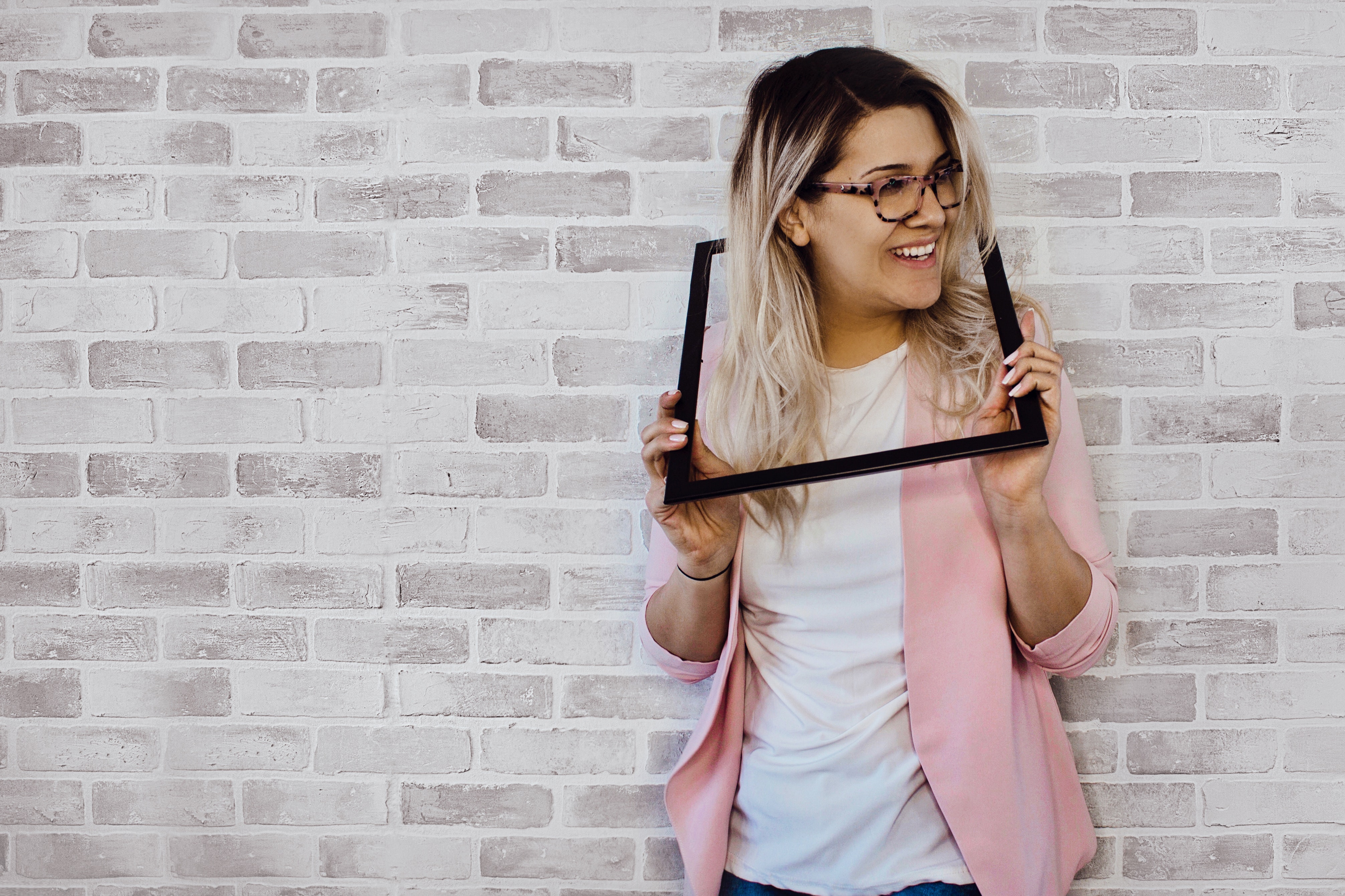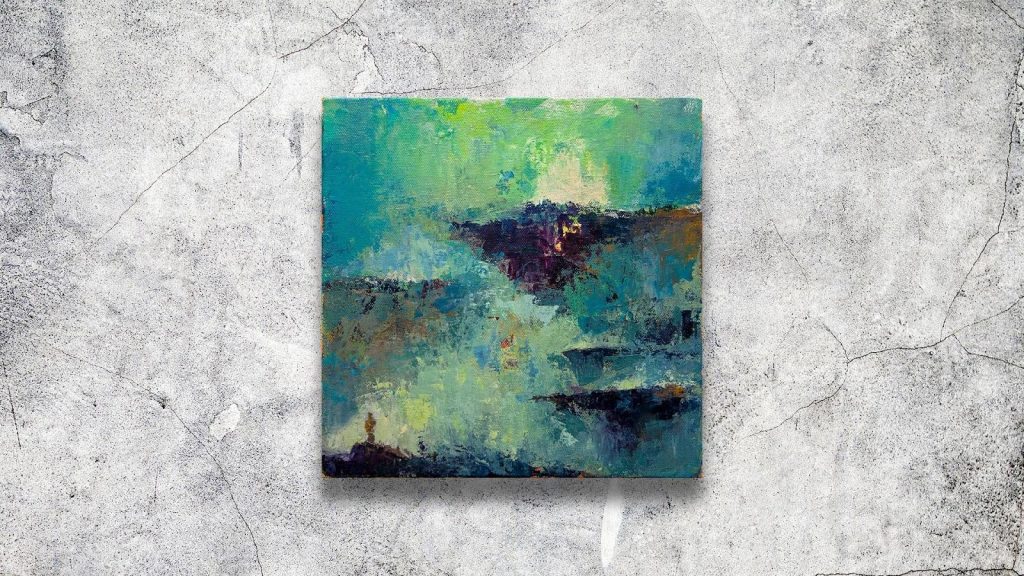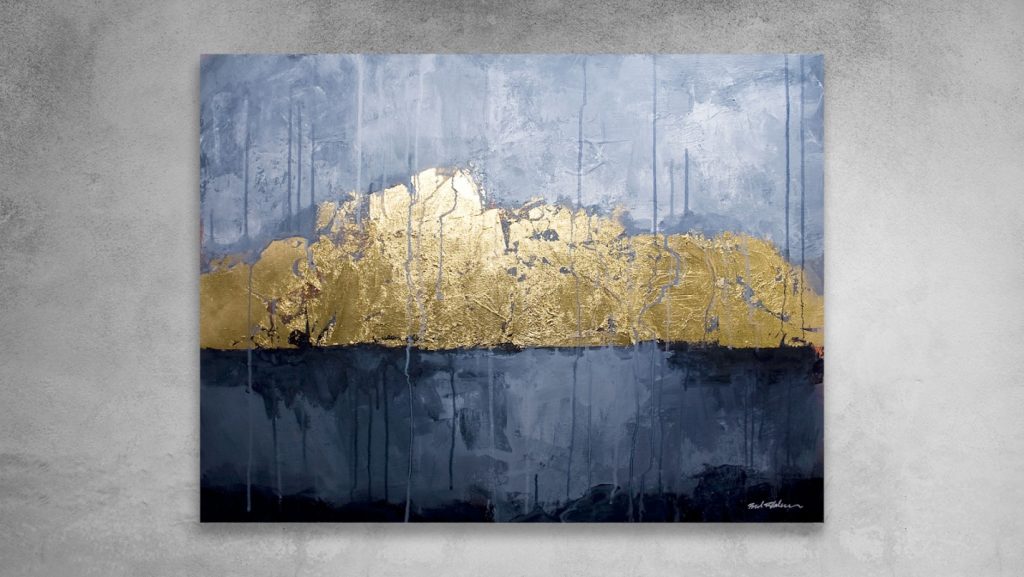
Guest article from bradblackman.com
One of the biggest factors in creating a space that makes you feel more calm, relaxed, and happy is the artwork that fills it. While selecting artwork is a very personal thing, here are a few guidelines that might help you find what works best for your space. Taking color, composition, and style into consideration will help you choose artwork that makes your home feel calm and peaceful.
Find Colors That Work with Each Other

Brad Blackman, “Lakeside Memories,” acrylic on canvas. 10 x 10 x 1.5 inches
The key here is to find colors that don’t clash. Sometimes colors that are too saturated or bright “vibrate” when placed next to each other. You see this illusion of motion or vibration where the edges meet. It creates a garish effect and should probably be avoided when creating a calm space!
Color theorist Josef Albers wrote about this in Interaction of Color:
“This initially exciting effect also feels aggressive and often even uncomfortable to our eyes. One finds it rarely used except for a screaming effect in advertising, and as a result it is unpleasant, disliked, and avoided.”
Contrast creates interest and variety, but clashing colors do not create a calm space! Too much contrast can have the same effect as vibrating colors as well.
Artwork that is calming to the eye is likely to have muted, analogous colors with just a hint of contrasting color to add a bit of interest.
Look for Compositions That Strike a Balance Between Static and Dynamic
If you’re not on the up and up on your art terminology, think of dynamic compositions as having asymmetrical balance. Static compositions are completely balanced.
Traditionally, paintings with a triangular composition tend to be more exciting because they lead the eye to a specific point. One particular painting that comes to mind is “Liberty Leading the People” by Eugene Delacroix. Bare-chested Liberty waves the French flag among a tangle of bodies, symbolizing the victory and sacrifice of the French Revolution. It’s inspiring, but it’s not exactly calming.

By Eugéne Delacroix – Erich Lessing Culture and Fine Arts Archives via artsy.net, Public Domain, https://commons.wikimedia.org/w/index.php?curid=27539198
Dynamic compositions may be visually interesting, but as with contrast, too much of it becomes unnerving.
Conversely, a completely static composition can be boring. Ideally, you want a blend of static and dynamic composition, with a positive energy that is at once motivating and calming.
Find a Style That Calms You
Style and taste are highly subjective and highly personal. What works for one person will displease another.

Brad Blackman, “So Close Yet So Far,” 2019. acrylic on canvas. 10 x 10 inches
That said, we can probably all agree that artwork created in a frenzied manner is not calming. Artwork created with confidence inspires more confidence. With a little effort, you can see when the artist was struggling with something and when the artist was confident in their abilities.
Artwork with a carefully-crafted style that has been lovingly developed with deliberate work may bring you peace.
How I Do This in My Own Artwork
In my own artwork there is always a sense of peace in the midst of chaos. My paintings are arguably stormy in many cases, with just enough hint of calm that it shows that all is not lost and that peace is just around the corner.

Brad Blackman, “Hope,” 2018. acrylic and gold leaf on canvas. 30 x 24 inches

Brad Blackman, “Rumble,” 2017. acrylic on canvas. 8 x 8 inches

Brad Blackman, “Morning Mist,” 2015. acrylic on canvas. 20 x 24 inches.
What works for you?
Choosing artwork for your space is a very personal thing, but hopefully thinking about color, composition, and style will help you create a space that feels calm and peaceful. What has worked for you?
